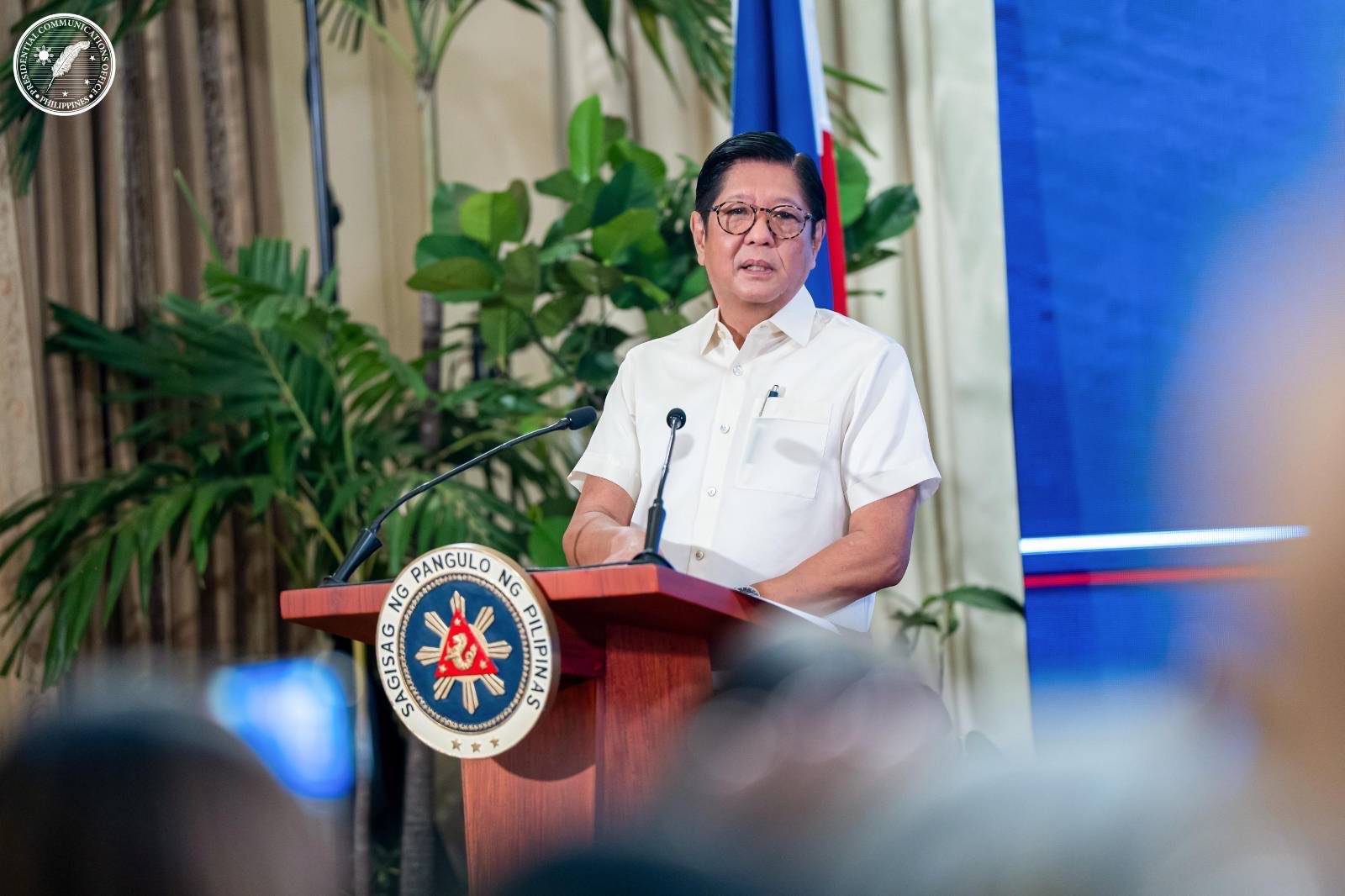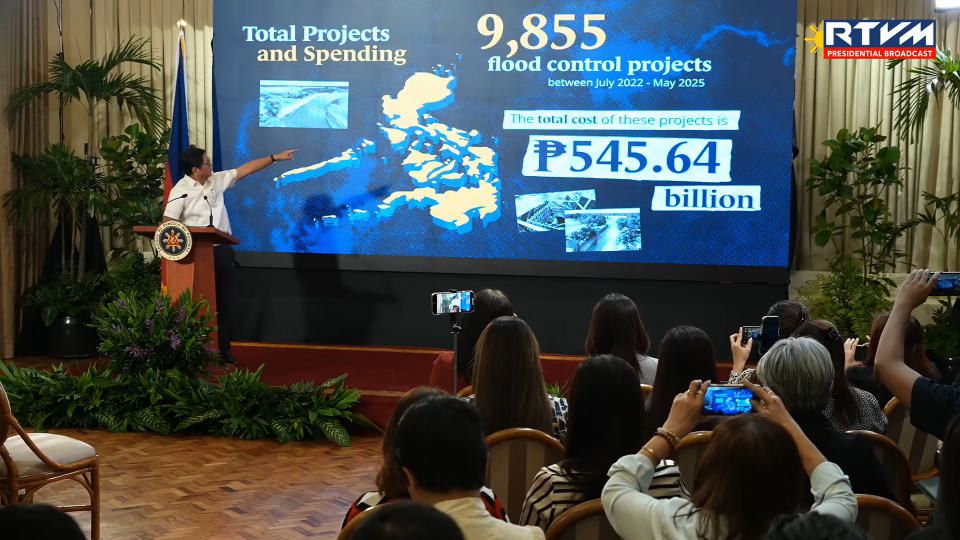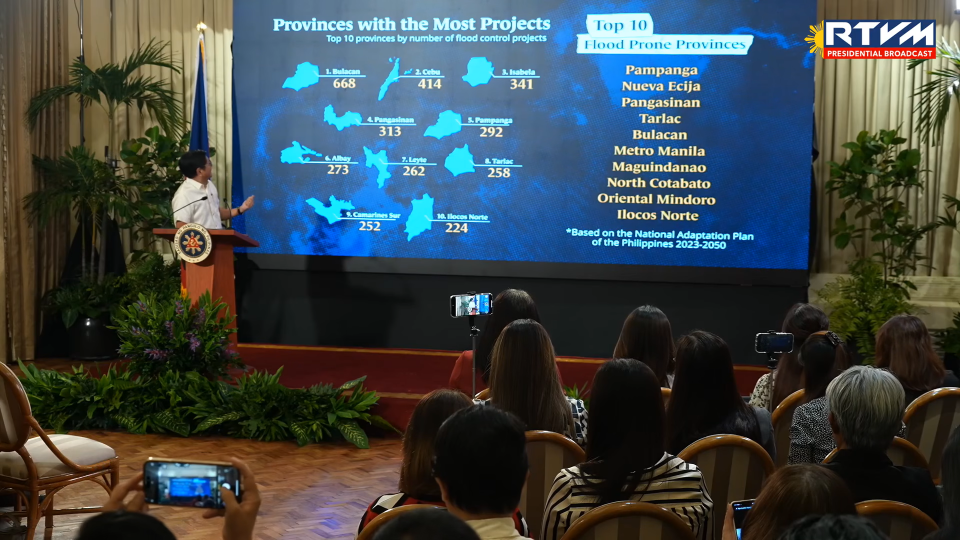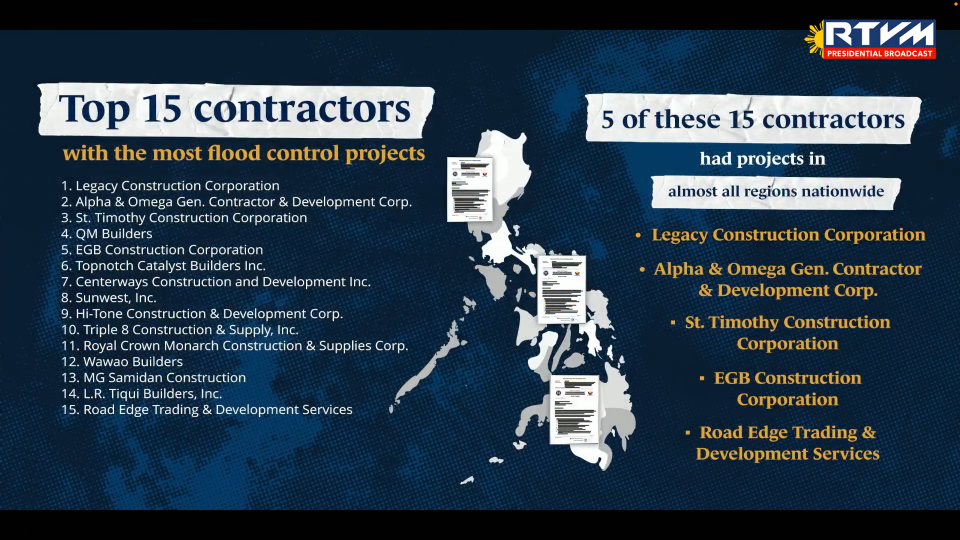
By Dean Aubrey Caratiquet
President Ferdinand R. Marcos Jr. led the inaugural launch of the “Sumbong sa Pangulo” website this Monday, which he cites as a platform that would empower the citizenry to express their sentiments and upload evidence of lapses or anomalies in flood control projects across the country.
The President began with a brief video presentation showcasing the features of the www.sumbongsapangulo.ph website, which include search filters that can narrow down a query to a specific region, province/city, type of work, and funding year; an interactive map which uses satellite data to pinpoint the geographic location of a flood control project; a detailed description of a flood control project showing its contractor, contract cost, and starting date; and a report button where one can submit photos or videos about the project’s status.
He continued his press conference by going over some of the initial findings reported by the Department of Public Works and Highways (DPWH), whom he ordered to conduct an audit into these flood mitigation infrastructures during his 4th State of the Nation Address (SONA) on July 28.
“I put it into a form that is accessible to the public—and more importantly, it is in a form that the public can use so that they can first identify the projects that are within their area, within their barangay—so they can actually go and look at it,” President Marcos said in his speech at the Palace.
“Or if they already have information, they can tell us about it; kung maganda ang naging project, kung hindi maganda ang naging project, bakit hindi maganda ang naging project, ano [ang] naging problema,” the President added.

Numerical figures, red flags
The Chief Executive meanwhile delved into the statistics about the government’s flood control projects across the country, with 9,855 built between July 2022 and May 2025 and costing P545.64 billion.
However, he expressed frustration about 6,021 of these projects having vague details, with many projects in different locations having similar contract costs and in certain instances, a similar contractor as well.
President Marcos also shared the regions in the country with the most concentration of flood mitigation infrastructures vis-à-vis highest spending for these projects, with Region III (Central Luzon) coming on top at 1,617 projects costing P98.01 billion; followed by the National Capital Region (NCR) at 1,058 projects, costing P52.57 billion; and by Region V (Bicol Region) at 866 projects, costing P49.61 billion.
Among the figures shared by the President are as follows:
Top 10 Flood Prone Provinces (according to the National Adaptation Plan of the Philippines 2023-2050)
- Pampanga
- Nueva Ecija
- Pangasinan
- Tarlac
- Bulacan
- Metro Manila
- Maguindanao
- North Cotabato
- Oriental Mindoro
- Ilocos Norte
Provinces with Highest Concentration of Flood Control Projects
- Bulacan (668)
- Cebu (414)
- Isabela (341)
- Pangasinan (313)
- Pampanga (292)
- Albay (273)
- Leyte (262)
- Tarlac (258)
- Camarines Sur (252)
- Ilocos Norte (224)

“I think, you will notice, this side (left) and that side (right) don’t necessarily match. Now, I’m sure there are explanations for that. We will have to study it further, but you would intuitively say that the areas; the provinces; the regions; whatever pinaka-flood prone, ‘yon dapat ang pinakamaraming projects pero parang hindi tumutugma. Kaya kailangan nating pag-aralan nang mabuti kung bakit nagkaganyan,” President Marcos said, lamenting the disparities between flood prone provinces and the concentration of flood mitigation infrastructures in provinces across the archipelago.
The President moreover balked at the ineffectivity of water pumping stations in reducing floods in Metro Manila, pointing out the significant amount of garbage that clogs waterways and reduces the capacity of these flood control projects, recalling his earlier launch of the “Bayanihan sa Estero: Malinis na Estero Pamayanan Protektado” Program in Pasig City on August 2.
He also expressed concern about the distribution of the government’s P545 billion flood control project budget among contracting entities, with P100 billion being awarded to only 15 contractors. And of these 15 contractors who make up a significant portion of the allocated financial resources, five of them have projects nationwide.

Clarifications, responses on media queries
Before engaging in a Q&A with the media, President Marcos clarified that these initial findings are not conclusive evidence, but rather an insight into the audit process of the DPWH on these flood control projects.
Moreover, he encouraged the citizenry to make the most out of using the website, reassuring them that he will personally look into this pressing matter, “Ngayon meron na kayong malalapitan, eto ang lalapitan niyo ako mismo, dahil ako ang titingin dito araw-araw sa website natin at babasahin ko ang mga report na ibibigay ng taumbayan.”
When quizzed by reporters, the Chief Executive welcomed help from the private sector, noting that their contributions to national development would ensure the country’s progress moving forward, even beyond the scope of flood mitigation infrastructures.
He also cited the Department of Economy, Planning, and Development (DEPDev) as the primary agency in charge of the investigation into the effectiveness of flood control projects in regions across the country. (with report from Clay Pardilla/PTV News)
avds
